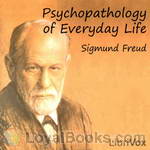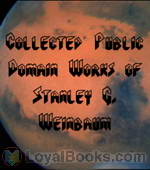|
Books Should Be Free Loyal Books Free Public Domain Audiobooks & eBook Downloads |
|
|
Books Should Be Free Loyal Books Free Public Domain Audiobooks & eBook Downloads |
|
Science |
|---|
|
Book type:
Sort by:
View by:
|
By: Scott Nearing (1883-1983) | |
|---|---|
 The Next Step A Plan for Economic World Federation
The Next Step A Plan for Economic World Federation
| |
By: Selina Gaye (1840-1914) | |
|---|---|
 The World's Lumber Room
The World's Lumber Room
If this book were written today, it would be called "The Story of the World's Rubbish".That may not sound a promising subject for a book, but we are taken on a journey all over the world (and beyond) to explain the many varieties of dust and refuse - animal, vegetable and mineral - how it is made both by man and by nature, what happens to it, and why we need it. We find that recycling is nothing new: man has been doing it for centuries, and nature has been doing it for billions of years. As every schoolboy knows, 'matter is neither created nor destroyed', so it stands to reason that every particle of it must be somewhere... | |
By: Sewell Peaslee Wright (1897-1970) | |
|---|---|
 The Death-Traps of FX-31
The Death-Traps of FX-31
| |
 The God in the Box
The God in the Box
| |
 The Terror from the Depths
The Terror from the Depths
| |
 The Infra-Medians
The Infra-Medians
| |
 Priestess of the Flame
Priestess of the Flame
| |
By: Sextus Julius Frontinus (40-103) | |
|---|---|
 Stratagems and The Aqueducts of Rome
Stratagems and The Aqueducts of Rome
Frontinus' Stratagems is a collection of examples of military stratagems from Greek and Roman history, which the author comments based on his own experience as a general in Germania. Many of the stories he tells can also be found in other Roman authors like Valerius Maximus and Livy. His most famous work however is De aquaeductu, The Aqueducts of Rome, an official report to the emperor on the state of the aqueducts of Rome, in two books. It presents a history and description of all the nine aqueducts that provided the water-supply of Rome in the first century, as well as information about the laws relating to its use and maintenance, and the quality of water delivered by each. | |
By: Shell Union Oil Corporation | |
|---|---|
 Let's Collect Rocks and Shells
Let's Collect Rocks and Shells
| |
By: Sigmund Freud (1856-1939) | |
|---|---|
 Psychopathology of Everyday Life
Psychopathology of Everyday Life
Professor Freud developed his system of psychoanalysis while studying the so-called borderline cases of mental diseases, such as hysteria and compulsion neurosis. By discarding the old methods of treatment and strictly applying himself to a study of the patient's life he discovered that the hitherto puzzling symptoms had a definite meaning, and that there was nothing arbitrary in any morbid manifestation. Psychoanalysis always showed that they referred to some definite problem or conflict of the person concerned... | |
By: Simon Newcomb (1835-1909) | |
|---|---|
 Side-Lights on Astronomy and Kindred Fields of Popular Science
Side-Lights on Astronomy and Kindred Fields of Popular Science
| |
 The Reminiscences of an Astronomer
The Reminiscences of an Astronomer
| |
By: Simon Plouffe (1956-) | |
|---|---|
 The First 498 Bernoulli Numbers
The First 498 Bernoulli Numbers
| |
 Miscellaneous Mathematical Constants
Miscellaneous Mathematical Constants
| |
 The First 1001 Fibonacci Numbers
The First 1001 Fibonacci Numbers
| |
 The Value of Zeta(3) to 1,000,000 places
The Value of Zeta(3) to 1,000,000 places
| |
By: Sir Arthur Conan Doyle (1859-1930) | |
|---|---|
 Danger! and Other Stories
Danger! and Other Stories
This is a volume of short stories by the famous Arthur Conan Doyle. | |
By: Sir Charles Bright (1863-1937) | |
|---|---|
 Story of the Atlantic Cable
Story of the Atlantic Cable
The electric telegraph, together with the railway-train and the steamship, constituted the three most conspicuous features of late 19th century civilization. Indeed, it may be truly said that the harnessing electricity to the service of man for human communication has effected a change in political, commercial, and social relations, even more complete than that wrought by steam locomotion. This is the story of how the electric telegraph cable was laid across the floor of the Atlantic from Newfoundland to Ireland. - Summary by modified from the introduction | |
By: Sir Francis Galton (1822-1911) | |
|---|---|
 Hereditary Genius
Hereditary Genius
A biographical summary of the pre-eminent men of Britain grouped by profession. The extensive survey draws from information including college graduation, reputation during career, fellowships, and even known relatives. Includes discussions on findings and observations as well as referenced appendices. - Summary by Leon Harvey | |
 Inquiries into Human Faculty and its Development
Inquiries into Human Faculty and its Development
Francis Galton, credited with the discovery of identification by fingerprinting, also took a long term interest in the study of biometrics. In this book, many different faculties, both observable and measurable are discussed in length and methods of collecting data suggested. In addition, casual observations from personal memoirs, and drawing similar cases from other reputable sources are also compared. A wide variety of topics are mentioned, including differences in appearance within family members, to subtle habits and emotional responses comparing humans and animals are mentioned in a series of chapter length essays. - Summary by Leon Harvey | |
By: Sir Thomas Edward Thorpe (1845-1925) | |
|---|---|
 History of Chemistry, Volume II. From 1850-1910
History of Chemistry, Volume II. From 1850-1910
A history of the advances in chemistry, in the fields of inorganic, organic and physical chemistry from the mid-nineteenth century through the early 1900s. Included are brief biographical sketches of some early pioneers in the field such as Mendeleev, Liebeg, Williamson, Dewar and others. Chapters covering the discovery of new elements, the developing understanding of structure, properties and reactivity, the beginnings of practical organic synthesis and the early work on stereoisomerism show how the way was paved for the discoveries that followed in the 20th century... | |
By: Sir William Henry Bragg (1862-1942) | |
|---|---|
 World of Sound
World of Sound
The World of Sound consists of six lectures delivered before a juvenile audience at the Royal Institution, Christmas 1919. The Royal Institution Christmas Lectures are a series of lectures on a single topic, which have been held at the Royal Institution in London each year since 1825, except several years during the Second World War. The lectures present scientific subjects to a general audience, including young people, in an informative and entertaining manner. Michael Faraday initiated the first Christmas Lecture series in 1825, at a time when organised education for young people was scarce... | |
By: St. George Jackson Mivart (1827-1900) | |
|---|---|
 On the Genesis of Species
On the Genesis of Species
| |
By: Stanley Gimble | |
|---|---|
 Breakaway
Breakaway
| |
By: Stanley Grauman Weinbaum (1902-1935) | |
|---|---|
 Works of Stanley G. Weinbaum - A Martian Odyssey
Works of Stanley G. Weinbaum - A Martian Odyssey
Stanley G. Weinbaum is best known for his short story “A Martian Odyssey” which has been influencing Science Fiction since it was first published in 1934. Weinbaum is considered the first writer to contrive an alien who thought as well as a human, but not like a human. A Martian Odyssey and its sequel are presented here as well as other Weinbaum gems including 3 stories featuring the egomaniacal physicist Haskel van Manderpootz and his former student, playboy Dixon Wells. | |
 Valley of Dreams
Valley of Dreams
| |
 The Worlds of If
The Worlds of If
| |
 The Ideal
The Ideal
| |
 The Point of View
The Point of View
| |
 Pygmalion's Spectacles
Pygmalion's Spectacles
| |
By: Stanton Arthur Coblentz (1896-1982) | |
|---|---|
 Flight Through Tomorrow
Flight Through Tomorrow
| |
By: Stephen A. Kallis (1937-) | |
|---|---|
 The Untouchable
The Untouchable
| |